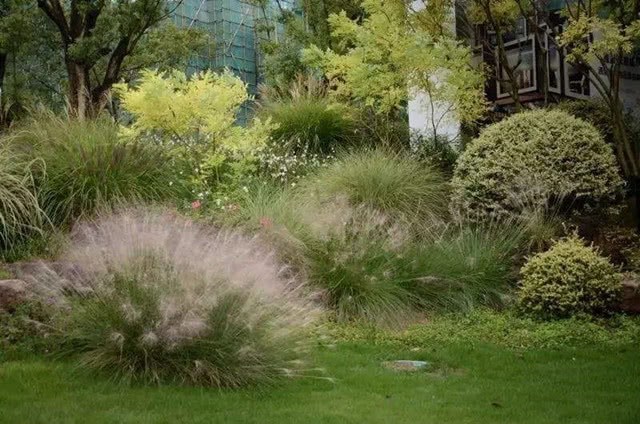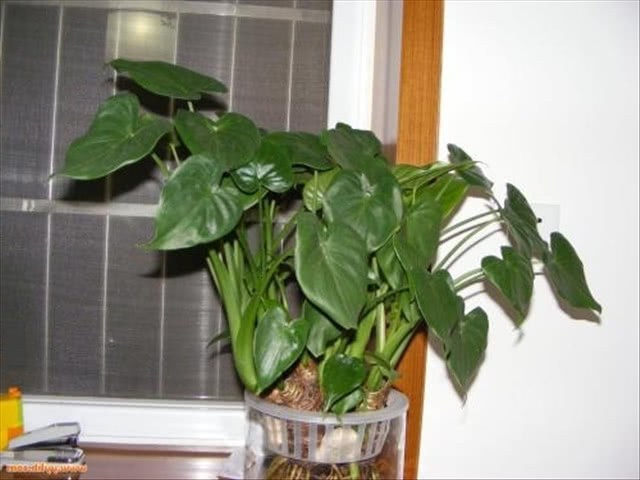Configuration elements and principles of plant landscaping

As people have higher and higher requirements for the living environment, plants occupy an important position in the environment. Plant landscaping refers to making the plant community or individual plant bring people a feeling or association of beauty in shape, color, line and shape by means of artificial design, planting, maintenance and other means. that is to create a specific landscape by reasonably matching ornamental plants with planting, modeling and other activities. Plants also play a positive role in regulating human psychology and spirit, and play a role in dividing the space and achieving the landscape effect of changing scenery.
Elements of plant configuration
I. Plant color
Color can change the three-dimensional visual size of real objects, guide people's line of sight, and increase the depth of the landscape. Bright colors, such as red, yellow, orange, etc., make the object appear more prominent and make the object approach visually. Cool colors such as green, blue and purple make objects far away visually. Gray and black are neutral colors, which are most suitable for bright background colors.
Second, plant size
The most direct and realistic spatial characteristics of plant elements. (trees, shrubs), plant size is an element with changing characteristics, all plant design must be considered from two aspects: one is the size of the plant when it is mature, and the other is the size of the plant when it is first planted.
III. Plant shape and morphology
Spherical, umbrella-shaped, hanging branch-shaped, steeple-shaped, tapered, cylindrical, free-shaped. In principle, plants with extreme shapes should be planted alone rather than in groups, such as old tree stump, weeping willow, dragon claw locust, dragon claw willow and so on.
Lines and texture, geometric lines and shapes are a kind of organization method of plant landscape configuration.
Straight lines show strong directionality and movement, so people often use vertical or horizontal flora to guide people's line of sight.
The curve makes the landscape more natural, gentle and elegant. Texture is the synthesis of rough or fine appearance and overall temperament of plants. It is the comprehensive expression of plant size, surface vision, leaf and branch morphology.
Principles of plant allocation
I. the principle of diversity and unity
Diversity and unity is often called unity, and the greatest art is to turn the most complex diversity into the highest degree of unity. Diversity and unity are the basic principles of formal beauty of plant landscape. In plant landscape design, the appearance, color, line, texture and mutual combination of plants should have certain changes to show differences, and at the same time to maintain consistency between them in order to achieve a sense of unity and to seek change in unity and unity in change.
Second, the principle of rhythm and rhythm
In landscape design, regular changes in plants will produce a sense of rhythm, which can avoid monotony. For example, the continuous long ribbon flower bed on the roadside will make people feel very monotonous if there is no change, and if its image is continuously broken to form the situation of large and small flower beds one after another, it will bring a sense of rhythm and rhythm to people's vision.
III. The principle of proportion and scale
Different from the hardware landscape, the relevant spatial proportion of plant landscape configuration should consider not only the three-dimensional spatial relationship, but also the three-dimensional changes of plants in time.
IV. the principle of symmetry and balance
Symmetry is a form with strong regularity and easy to get a sense of balance and stability. Any creation is inseparable from the principle of symmetry and balance.
V. principles of comparison and coordination
Contrast and harmony is a pair of contradictory elements, the application of appropriate aesthetic sense, improper application will form ugliness. Plant landscaping can create strong visual effects and stimulate people's aesthetic experience through the comparison of color, morphology, lines, texture, volume and composition.
VI. The principle of theme and plot
The theme and plot principle is not an indispensable part of the plant landscape configuration, but the works with theme and plot are good works, which can often add cultural factors to the works and bring more interest and compact structure.
- Prev

The balcony garden is an advanced version of the city people are growing vegetables on the table.
Private balcony vegetable garden teacher Xiaoye teaches you how to grow broccoli: broccoli can be grown at home all the year round, prepare a glass or small flowerpot with holes in the bottom before planting, and put the seeds of broccoli into the holes.
- Next

Pay attention to these things for Dishui Guanyin in winter so that it can go through the dormant period smoothly.
Original title: pay attention to these things for Dishui Guanyin in winter and let it go through the dormant period smoothly! Abstract: do you support Dishui Guanyin at home? If you are feeding Dishui Guanyin, it is already autumn whether you are for.
Related
- Wuhan Hospital Iron Tree Blooming Result Was Instantly Frightened by the Gardener Master
- Which variety of camellia is the most fragrant and best? Which one do you like best?
- What is the small blue coat, the breeding methods and matters needing attention of the succulent plant
- Dormancy time and maintenance management of succulent plants during dormancy
- Minas succulent how to raise, Minas succulent plant pictures
- What are the varieties of winter succulent plants
- How to raise succulent plants in twelve rolls? let's take a look at some experience of breeding twelve rolls.
- Attention should be paid to water control for succulent plants during dormant period (winter and summer)
- Watering experience of twelve rolls of succulent plants
- Techniques for fertilizing succulent plants. An article will let you know how to fertilize succulent plants.

